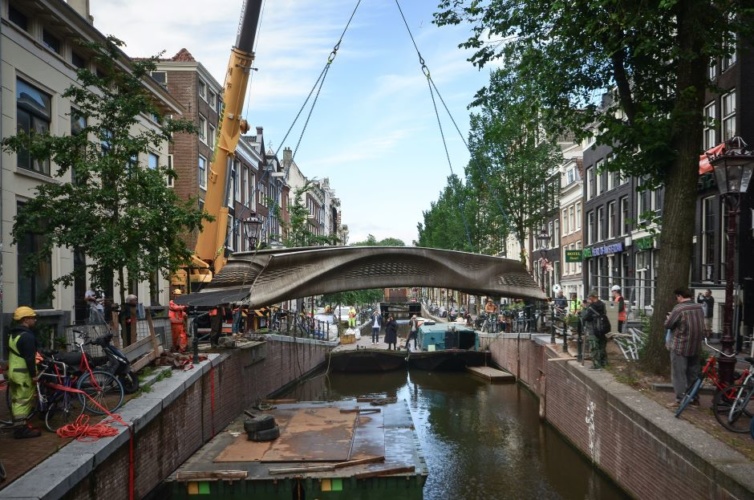The construction of Notre Dame de Paris at the centre of the French capital marked a moment of immense human achievement at the end of the thirteenth century. A triumph of engineering innovation, the cathedral stood higher than almost any other structure in Western Europe, using construction, design, and planning techniques that would set the benchmark for centuries to come. 800 years on, as the cathedral emerges from restoration following a devastating fire in 2019, it is once again setting the agenda for innovation and technology in complex engineering.
The restoration of Notre Dame has offered many a first glimpse into the technologies that have been quietly revolutionising building methods in countries around the world for the past several years. And at their centre is Building Information Management (BIM), the methodology that creates a ‘digital twin’ of complex architectural structures, allowing a perfect replica of a factory, stadium, skyscraper or power station to be rendered, altered, visualised, and explored in a virtual world. The growth of BIM lifts the lid of the direction of travel for how digital tools will increasingly shape and define construction, engineering, architecture and infrastructure.

Aside from the visual utility of rendering a ‘digital twin’ in a 3D virtual environment, the real secret to BIM’s success lies in collaboration. BIM works like a Google Doc for complex structures, allowing architects and engineers to work with multiple teams in multiple locations, altering and tweaking a consistent model in real time. Even before the lockdowns and travel restrictions of COVID, the industry recognised the importance of reliable tools and technologies for remote working, and it’s clear that collaborative platforms will increasingly define the way the global engineering industry operates well beyond the pandemic.
Through the lens of BIM, some additional trends and tools that will reshape infrastructure in the digital world are being revealed. The first and most significant is in the amount of industry data produced, analysed and stored throughout the lifecycle of a structure. Capturing and interpreting this data means that the owners and operators of infrastructure not only have structures with a brain, but structures with a memory to go with it. From precise interventions in maintenance to the exact location of ducts, bolts, wires, and pipes, data-rich structures provide operators – now and long into the future – with a reliable record that offers benefits across efficiency, cost savings, and safety over time.
At a city level too, technologies like Geographical Information Mapping Systems (GIS) are doing the same thing for telecommunications, transport infrastructure, and public utilities. GIS can create a data record of the subsurface of an urban environment, mapping everything from faults and foundations to tunnels and transmission lines. Not only will this abundance of data make the prospect of ‘Smart Cities’ more of a reality, but when combined with real‑time monitoring tools, the subsurface data network becomes an early-warning system for infrastructure failures and risks, helping improve the overall safety and efficiency of urban centres.
Beyond collaboration, the common denominator with these technologies is precision. The BIM and GIS platforms provide a degree of accuracy that enables the engineering value chain to order and purchase resources more effectively, but combining data with the possibilities of 3D printing means that the industry can react to shortfalls more effectively too. 3D printing allows for precision-tooled components to be designed remotely and to order before being rendered and installed on-site, bringing savings on time, cost, and carbon emissions. In fact, earlier this year the first 3D-printed footbridge was completed in Amsterdam (below), showing the real-world application of these combined technologies in the civic space.

Given the appetite for such efficiencies, it comes as no surprise that the popularity and growth of digital services for civil engineering has coincided with an overwhelming increase in the pressure placed on complex construction projects to shorten build times, reduce costs, enhance the safety standards, and limit environmental footprints. These technologies are not only answering these challenges in the present day, but looking far ahead to the sustainability needs of future generations and the information that will not only be useful, but vital, in keeping infrastructure working.
In this context, DMT GROUP has had a front-row seat in the development of digital services for civil engineering. Not only have we had a first-mover advantage in beginning the process of introducing and scaling BIM and GIS across our own projects, but we have been a technology partner for complex infrastructure for the best part of 300 years, so we have learned the difference between technologies that are fashionable, and technologies that are fundamental.
3D-printed steel footbridge unveiled in Amsterdam
Our digital platform is one of the first end-to-end digital design platforms that aims to address the entire lifecycle of a project, covering aspects of planning, design, construction, supervision, operations, maintenance and decommissioning. As a part of our ongoing strategy to streamline and optimise planning capabilities for civil engineering and infrastructure projects, we are scaling a digital design management platform that brings together the principles of BIM and GIS, along with real-time monitoring and 3D ground modelling.
The digital services and solutions that are defining the civil infrastructure space not only provide clients with improvements of cost, and time optimisation, but showcase the value of intelligent data utilization, transparency and collaboration. These tools will allow clients to manage and maintain construction projects and make decisions with exceptional accuracy throughout any structure’s entire life span – and far beyond our own.
Diego Sancho Calderón is deputy head of the Project Management Office of DMT’s Civil and Mining Engineering Division










Water Sector Talent Exodus Could Cripple The Sector
Well let´s do a little experiment. My last (10.4.25) half-yearly water/waste water bill from Severn Trent was £98.29. How much does not-for-profit Dŵr...